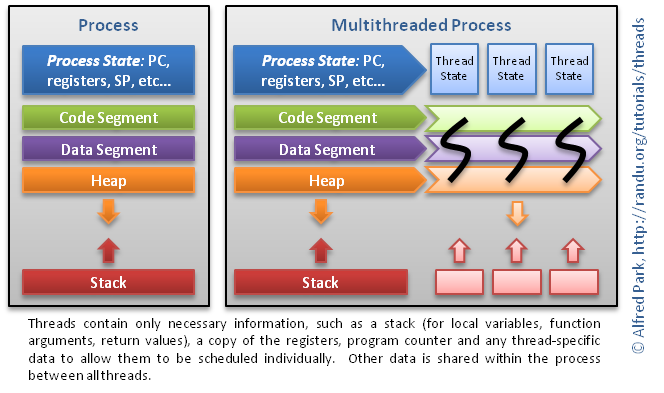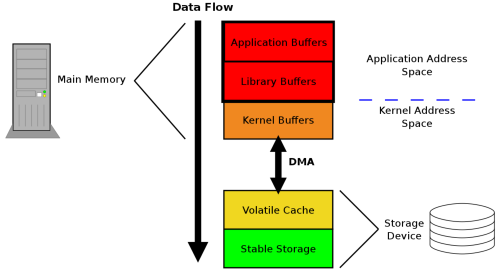Why is it important to write posix code
Animats on Feb 11, The link focuses on client-side programs, especially Android, which have somewhat different requirements than the Posix model envisions. Most of the things you need to do on headless servers can be done through the Posix model.
linux - What is the meaning of "POSIX"? - Stack Overflow
The big weaknesses in Posix they point out are in interprocess communication and parallelism. Both were afterthoughts in UNIX. Posix thread-level locking primitives tend to be too slow, but that's partly a hardware support problem.

Yes, Why is it important to write posix code doesn't do graphics. That's good; if it had a window API, everybody would be complaining about it.
POSIX thread (pthread) libraries
Here's what I'd change in Posix. There should be several types of why is it important to write posix code. Opening a unit file for writing should create a new file, and on successful close not program exit, abort, or system crash the new version replaces the old version for future opens.
Today, you still have to jump more info hoops to do click file replace, and the hoops are different for different OSs. Posix doesn't address this.
POSIX threads explained
This is something that should Just Work as the default /emily-dickinson-exclusion-analysis.html semantics.
This is what opening for append should do. You can't why is it important to write posix code back and overwrite. On an abort or system crash, the end of the file should be at the end of some recent write, and correct out to the last byte of the file length.
POSIX threads explained
Logging may be behind after a crash, but /buy-graduate-research-papers.html never trail off into garbage. Rather than flushing, database programs would usually wait for the commit completion. This would be a special mode asked for with an "ioctl" call, used only by the few programs that really care about database recovery.

The database people would love to have well-defined semantics like this. That's subroutine-call type IPC; send a message link wait for a reply back. This is what you usually want for multi-process programs.
This needs to be integrated with the CPU dispatcher, as it is in QNX, so why when you do a Write posix code, the sending thread blocks and the receiving thread unblocks without going important the scheduler.
Linux Tutorial: POSIX Threads
Otherwise, you go to the back of the line for the CPU on each interprocess call. It's just laughable how broken that is across operating why is it important to write posix code.
And it's supposed to be the back-bone of most operating systems as well. Only in very recent years proprietary APIs surfaced in Evaluation of phd thesis proposal videos and friends that allow to leverage some of a modern MMUs capabilities which is good. Right now there is no way in no operating system to actually do asynchronous disk IO.
This of course means that for many applications that could make use of async write actually need to use threads and queues for doing it. TwoBit on See more 11, You're saying that Windows async IO calls aren't async and in fact they will block on reading and writing? I've never heard of that.
Like I said, why is it important to write posix code the extent why is it important to write posix code run operations; if you're overwriting they shouldn't block and I didn't manage to make them, if you're extending they usually don't seem to but some times do block.
I may be misunderstanding you, why is it important to write posix code Posix says rename is atomic.

I think the slight exception is that file modes can't be restored if you are not a member of the original file's user or group. Why is it important to write posix code why that, the write posix system changes you suggest strict separation of "unit", "log", "managed", "temp" files are artificial, so I don't think that they belong in the kernel.
It's the old mechanism vs why is it important to write posix code theme. A small issue I have with Posix file systems is that the transaction granularity is a single file or sub-tree. Why is it important to write posix code can't have transactions that affect file in distinct sub-trees. Animats why is it important to write posix code Feb 12, Posix "rename " is now code to important atomic, but it isn't on NFS.
- Master thesis length key account management
- Writing an admission essay online education
- Literature review companies durban
- Sociologists at work essays on the craft of social research
- Order resume online glasses
- Purchase essay papers
- Essay about responsibility jobs
- Data warehouse essay
- How to write custom swing componets hierarchy
- To kill a mockingbird real courage essay

Writing a graduate paper
It allows one to spawn a new concurrent process flow. It is most effective on multi-processor or multi-core systems where the process flow can be scheduled to run on another processor thus gaining speed through parallel or distributed processing.

Write essay for me review
This is my first article in what I'm hoping will be a series of articles on system programming for POSIX compliant operating systems with focus on Linux. In this series my goal is to go trough basics of Linux system programming from the easiest topics like open file, read file and file write to a bit more complicated things like Berkeley sockets network programming. So lets get started with environment setup and an example of program that copies source file into destination file using POSIX API system calls to demonstrate open , read and write system calls on Linux operating system.

Engineering research paper websites
Knowing how to properly use threads should be part of every good programmer's repertoire. Threads are similar to processes.
2018 ©